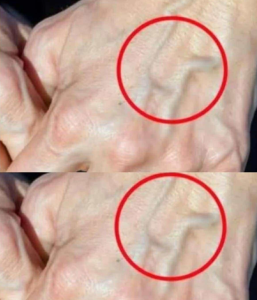When Should You Be Concerned About Suddenly Appearing Veins?
Veins are a normal and essential part of your circulatory system. They carry blood back to the heart and are typically hidden under the skin. But what happens when they suddenly become visible, bulging, or more prominent than usual? Should you be concerned?
In many cases, the sudden appearance of veins is harmless — a cosmetic issue or a natural response to activity or heat. However, in some situations, it may signal an underlying medical problem that should not be ignored. Knowing when to seek medical advice can make all the difference in early diagnosis and effective treatment.
Let’s break down what it means when veins suddenly appear, and when it’s time to take action.
Common Benign Causes of Suddenly Visible Veins
Not every prominent vein is a cause for alarm. In fact, there are several normal reasons veins might become more noticeable, including:
1. Exercise
During exercise — especially weightlifting or cardiovascular workouts — blood flow increases, and your veins become more visible, a phenomenon called vascularity. The increased pressure and muscular contractions push the veins closer to the skin’s surface.
-
Temporary and reversible
-
Common in athletes or those with low body fat
-
Usually no cause for concern unless accompanied by pain or swelling
2. Heat and Temperature Changes
Hot weather or a warm shower can cause veins to dilate, making them more noticeable. This is a natural response to help cool the body.
-
Veins may return to normal once the body cools
-
No lasting effect in most people
3. Aging
As you age, your skin becomes thinner and loses elasticity. Fat layers under the skin decrease, making veins stand out more clearly, especially on the hands, legs, and arms.
-
More common after age 50
-
Typically a cosmetic issue unless other symptoms develop
4. Weight Loss
Sudden or significant weight loss can reduce the fatty tissue under the skin, which acts as a cushion and camouflage for veins. Without it, veins may appear suddenly bulging or “rope-like.”
-
Common in people who lose a large amount of fat quickly
-
Often more aesthetic than medical
5. Genetics
Some people are simply born with more visible veins due to genetics or skin tone. Fair-skinned or thin individuals are more likely to see their veins prominently.
When Veins Signal a Health Concern
While visible veins can be completely normal, there are cases where a sudden appearance — especially with new symptoms — could indicate a deeper issue. Watch for these warning signs:
1. Painful or Swollen Veins
If veins appear suddenly and are accompanied by pain, tenderness, or swelling, it may be a sign of:
Deep Vein Thrombosis (DVT)
A serious condition where a blood clot forms in a deep vein, often in the legs. DVT requires immediate medical attention due to the risk of a pulmonary embolism.
Signs of DVT:
-
Sudden swelling in one leg
-
Warm, red, or discolored skin
-
Pain or heaviness in the leg
-
Tenderness along the vein
If you suspect DVT, seek emergency medical care immediately.
2. Varicose Veins
Varicose veins are twisted, enlarged veins that typically appear on the legs and feet. While they can develop slowly, they may also suddenly bulge or worsen.
Symptoms:
-
Aching or throbbing legs
-
Itchy or irritated skin
-
Heaviness after standing or sitting
-
Dark purple or blue veins
Varicose veins aren’t always dangerous, but they can lead to complications like ulcers, bleeding, or clots if untreated.
3. Superficial Thrombophlebitis
This is inflammation and clotting in a vein just under the skin, often due to an injury or IV catheter.
Symptoms:
-
A red, hard vein that is tender to the touch
-
Warmth around the area
-
Swelling or fever in severe cases
Though not as dangerous as DVT, it still requires medical evaluation.
4. Chronic Venous Insufficiency
A long-term condition where blood doesn’t flow properly back to the heart, leading to pooling in the leg veins.
Symptoms:
-
New or worsening visible veins
-
Swelling in ankles or calves
-
Skin discoloration or thickening
-
Leg ulcers
Chronic venous insufficiency can progress slowly but becomes serious without treatment.
5. Liver Disease or Vascular Disorders
In rare cases, suddenly visible veins on the abdomen, chest, or back may be a sign of a more serious internal condition like:
-
Cirrhosis or liver failure (causing “caput medusae” veins)
-
Superior vena cava syndrome
-
Vascular malformations
These conditions often come with additional symptoms, such as jaundice, shortness of breath, or unexplained weight changes.
When to See a Doctor
You should consult a healthcare provider if:
-
Veins appear suddenly with no clear cause
-
They’re painful, swollen, hot, or red
-
One limb looks larger or heavier than the other
-
You have a history of clots, heart disease, or cancer
-
The veins appear with other unexplained symptoms like fatigue or fever
-
Veins on the chest, abdomen, or face suddenly become visible
A doctor may order tests such as a Doppler ultrasound, blood clotting tests, or venogram to determine what’s going on.
Treatment Options
Depending on the cause, treatment can range from conservative to surgical:
-
Compression stockings – Help with varicose veins or mild circulation issues
-
Anti-clotting medications – For DVT or thrombophlebitis
-
Sclerotherapy or laser therapy – For cosmetic treatment of visible veins
-
Lifestyle changes – Elevating legs, walking, reducing salt, and maintaining a healthy weight can reduce pressure on veins
-
Surgery – In rare cases, severe venous disease may require vein stripping or bypass surgery
Preventive Tips for Healthy Veins
-
Stay active – Walking and leg movement promote healthy blood flow.
-
Avoid long periods of sitting or standing – Take breaks to stretch.
-
Elevate your legs – Especially if you feel swelling or heaviness.
-
Stay hydrated and eat well – A healthy vascular system starts from within.
-
Avoid tight clothing – Especially around the waist or thighs, which can restrict blood flow.
Conclusion
Suddenly visible veins can be surprising — even unsettling — but they aren’t always a cause for panic. In many cases, they are normal, temporary, and harmless. However, when accompanied by symptoms like swelling, pain, or discoloration, they may be a red flag pointing to a serious vascular issue.
Your body has ways of signaling when something’s wrong. Listen to it. If you’re unsure, don’t dismiss the change — consult a healthcare provider. When caught early, many vein-related conditions are treatable, manageable, and even reversible.

